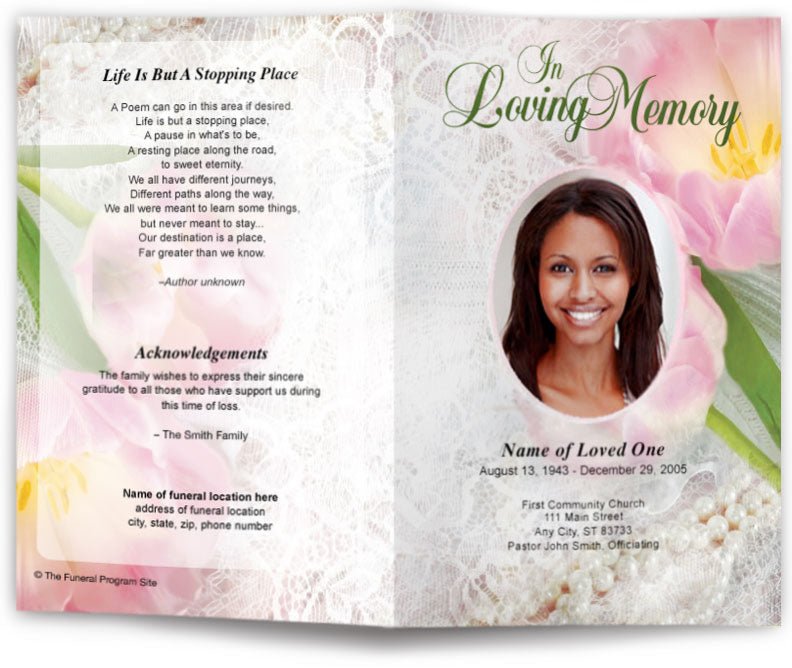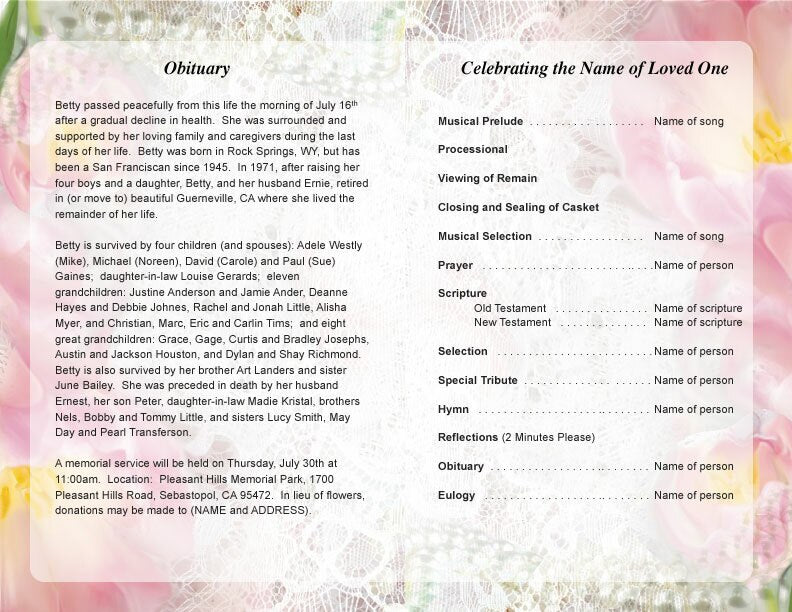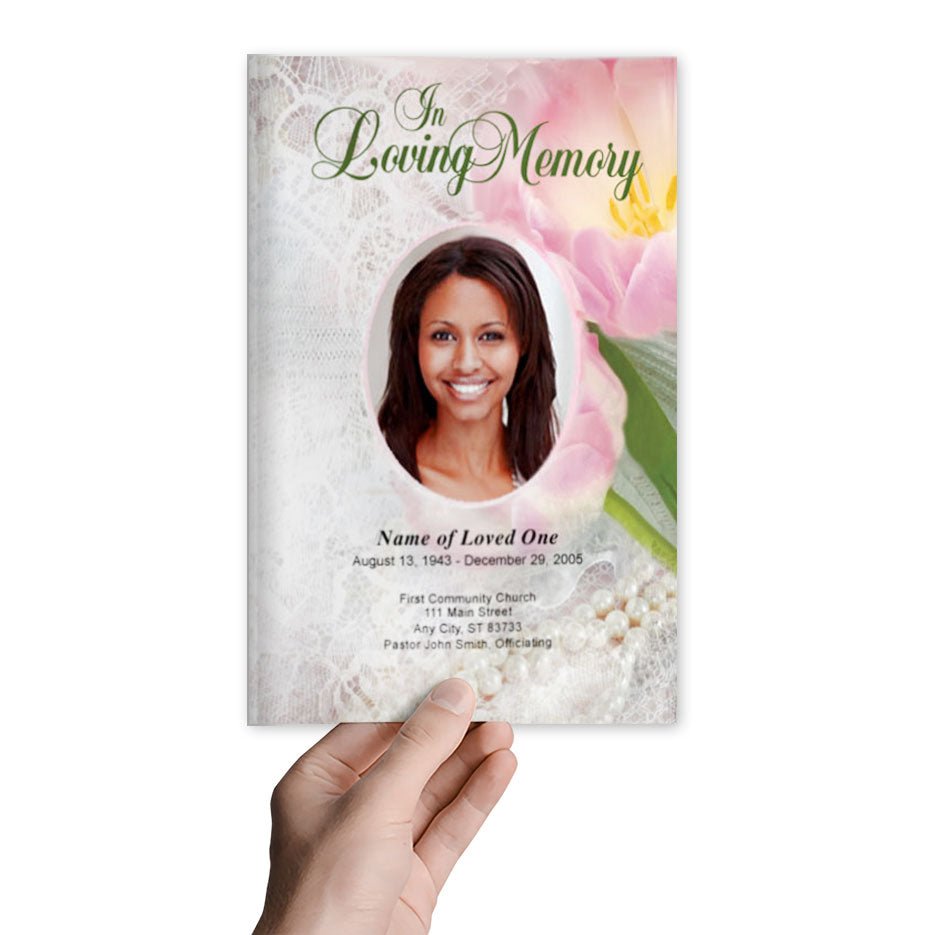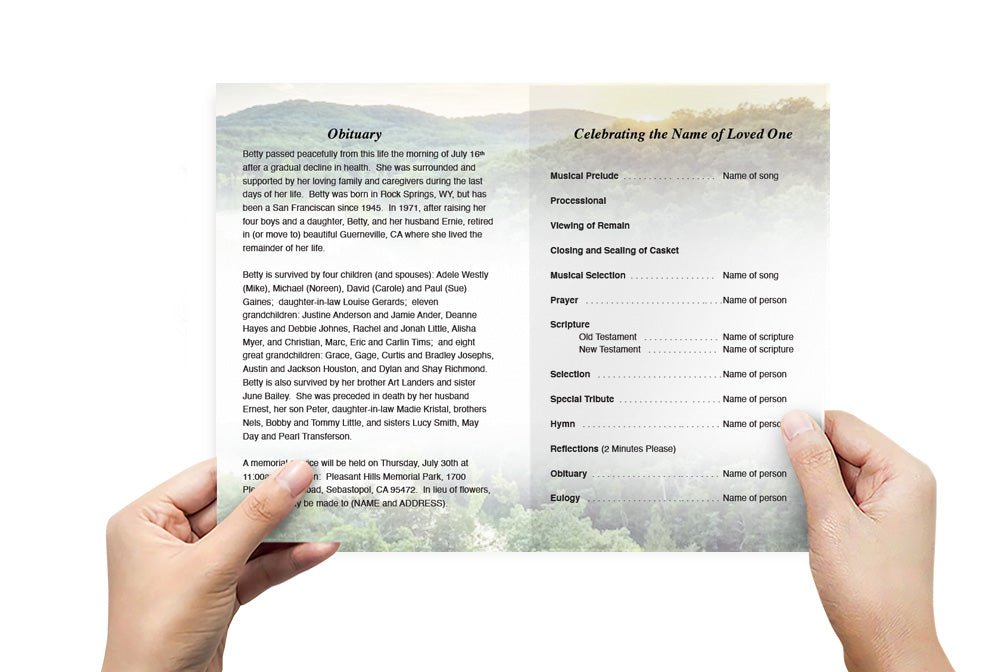How to Write a Touching Tribute for a Funeral Booklet

Writing a tribute for a funeral booklet can be a deeply emotional yet healing process. It’s an opportunity to honor the life of a loved one and celebrate the moments that made them unique. This tribute, sometimes referred to as a eulogy or a personal memory, can provide comfort to friends and family who read it. Here’s a guide on how to write a touching tribute that captures the essence of the person, paying homage to their life and legacy.
Begin with Reflective Memories
Before you start writing, take time to reflect on your loved one’s life and the moments you shared. Think about what made them special, such as their personality, quirks, values, or passions. Perhaps they had a unique sense of humor, a compassionate heart, or a talent that left an impression on everyone around them. By gathering these memories, you’ll be able to build a foundation for the tribute, making it a meaningful reflection of their life.
Making a List of Important Moments
Creating a list of specific memories, such as funny stories, inspiring achievements, or meaningful conversations, can help you find the right direction for your tribute. This might include significant milestones, like accomplishments or personal challenges they overcame, or even small everyday moments that reveal their character. These memories provide insights into the unique qualities that made your loved one unforgettable.
Choosing Key Traits to Highlight
Think about the main characteristics that defined your loved one. Were they nurturing, adventurous, dedicated, or full of laughter? Selecting a few key traits will help you structure your tribute around these qualities. For example, if they were particularly generous, you could include stories about their kindness or how they made others feel loved and supported. This approach will help you create a cohesive and memorable tribute that captures their essence.
Organize the Tribute with a Clear Structure
A structured tribute is easier to read and ensures that you cover all the important aspects of your loved one’s life. A good structure includes an introduction, a body with personal anecdotes, and a closing statement that expresses your feelings and gratitude.
Opening with an Introduction
Start by introducing your relationship to the deceased, sharing who they were and why they meant so much to you. This helps set the tone and lets readers understand the connection you had. You might begin with a fond memory, a significant quote they loved, or a description of how they impacted your life. This brief introduction sets the stage for a heartfelt tribute that feels both personal and approachable.
Sharing Stories and Personal Memories
The body of the tribute is where you can share specific stories and examples that illustrate their character. Select a few anecdotes that showcase their personality and values, such as their compassion, humor, resilience, or creativity. For example, if your loved one had a habit of making others laugh during tough times, include a story about how their humor brought light to challenging situations. These stories make the tribute come to life, allowing readers to remember the joy they brought to others.
Concluding with a Final Message
End the tribute by expressing your final thoughts and the lasting impact your loved one had on your life. You might want to convey how much they will be missed or share a message of gratitude for the time spent together. This closing statement doesn’t need to be long, but it should reflect your heartfelt feelings, leaving readers with a sense of warmth and love.
Tips for Making the Tribute Meaningful and Personal
A touching tribute is one that feels genuine, sincere, and reflective of your loved one’s life. By focusing on honesty and personal connection, you can create a tribute that feels deeply meaningful.
Use Simple, Honest Language
You don’t need to use elaborate language to convey your feelings. In fact, simple, straightforward words are often the most effective. Write as though you’re speaking directly to your loved one or sharing your thoughts with close friends and family. This approach makes the tribute more relatable and heartfelt, allowing readers to feel the sincerity behind your words.
Balance Emotions with Positive Memories
While it’s natural to feel sadness, focusing on positive memories and moments of joy will create a more uplifting tribute. Highlighting the happy times you shared helps honor their legacy and allows family and friends to remember them in a comforting way. Balancing emotions with joyful memories ensures that the tribute brings peace and healing to those who read it.
Consider Adding a Favorite Quote or Poem
If your loved one had a favorite quote, song lyric, or poem that held special meaning, consider incorporating it into the tribute. These words can add depth and personalize the message. Including meaningful quotes or verses that reflect your loved one’s beliefs or values can also help express what words alone cannot.
Reviewing and Finalizing the Tribute
After drafting the tribute, take some time to review and refine it. This final step ensures that you’ve captured everything you want to convey and that the tribute flows smoothly.
Reading Aloud for Flow and Clarity
Reading the tribute aloud can help you hear how it sounds and catch any areas that need adjustments. This approach also helps you check the flow and tone, ensuring that the tribute feels natural and genuine. If you feel comfortable, consider sharing it with a close family member or friend for feedback to make sure it resonates with others who knew your loved one.
Keeping the Length Appropriate
A funeral booklet tribute doesn’t need to be lengthy to be touching and meaningful. Aim for a few paragraphs that provide a concise yet impactful reflection of your loved one’s life. The goal is to leave a heartfelt message that feels both complete and memorable, honoring your loved one in a way that resonates with readers.
Finding Comfort in Writing a Tribute
Writing a tribute can be a healing process that brings comfort and clarity during a time of grief. By focusing on your loved one’s life, character, and the memories you shared, you’re able to create a tribute that celebrates them fully. This act of reflection allows you to process your emotions, finding peace in the love and memories that will endure.
In the end, a touching tribute is a gift to everyone who reads it. It offers a reminder of the joy your loved one brought to the world and the legacy they leave behind. Through your words, their spirit lives on, providing comfort and connection to family, friends, and everyone touched by their life.
For more on this topic, visit The Funeral Program Site.
© The Funeral Program Site - Funeral Programs, Funeral Program Templates and Cancer Ribbons





























